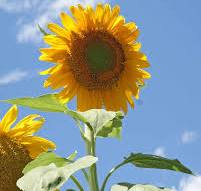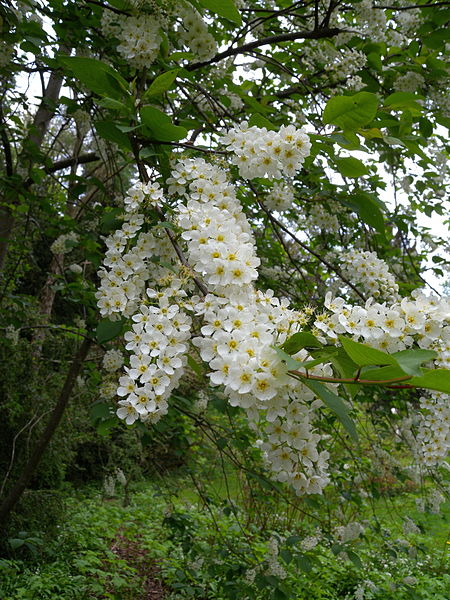Jim's Grow Your Own Birdfood Garden Seeds
Birdseed is easy to grow and natural seed will attract even more birds than filled feeders. As a bonus, by growing your own birdseed you will eliminate the need to fill feeders, since the birds will happily feed directly from the plants.
Informative articles found on the web:


Very tall plants reachin 12 feet produce huge flowers with gorgeous black seeds. Multi-use plant as leaves can be cattle food and stem fiber can be used for paper or dried for a firewood substitute.



If the initial blooms on Globe Thistle are deadheaded, several smaller, shorter blooms will appear. Globe Thistle has plenty of flower seed, so it is a good self-seeder, and deadheading will help slow that process a bit. In richer soils, the plant might grow so much as to require staking. The basal leaves deteriorate quickly, so best to plant low-growing plants next to the Globe Thistle. Hands can be cut by foliage and flower, so best to wear gloves when handling.
Globe Thistle makes a nice cut flower. These fuzzy blossoms also dry well. Cut stems, hang upside down in a dry, ventilated place. Sow Globe Thistle seeds outdoors after temperatures have warmed. Prepare soil, sow the flower seeds on the surface and press them into the soil. Do not cover the flower seeds, keep them moist, and soon you will be enjoying a new addition to your xeriscape perennial garden.

Dried flowers are used as a substitute for saffron. An annual plant that can handle a lot of heat in the garden, it grows about 32 inches tall and will bloom in 10 weeks from seed.
Dried safflower flowers are used in a lot of recipes where they help to improve the color of broths, soups and stews, without being expected to contribute any flavor. However, many cooks are unaware between the difference between safflower and saffron, and consider the former a cheaper grade of the latter, with saffron being very expensive in some regions.
Nutritious and popular, safflower seeds are a great option for many backyard birds while their unusual shape and bitter taste can discourage less welcome birds and squirrels. This makes them a beneficial addition to many bird feeding stations, and the birds are always grateful for a new and tasty treat.

Contains: Coneflower, Arroy Lupine, Mallow, Four-O'Clock, Nasturtium, Zinnia 'Pumila Mix', Bird's Eyes, Rocket Larkspur, Sweet William Pinks, Spurred Snapdragon, Corn Poppy, Scarlet Sage, Catchfly, Balsam, Dwarf Columbine, Foxglove, Maltese Cross, Lemon Mint and Rocky Mountain Penstemon.
Sow seeds in February in South, April in the North.
18g package of seeds will cover 100 square ft.


The fragrant flower heads mature into round fruits each containing hundreds of nutlike seeds that are eaten by waterfowl and other birds such as quail. Many birds use this deciduous shrub as a nesting site. It is a tremendous source of nectar for hummingbirds, butterflies and other pollinators and should be grown close to gardens when possible to help with pollination.
Buttonbush is naturally found in wet areas that are usually too wet for other perennial species to establish and thrive, but will grow just about anywhere you plant it, including upland sites, but not in really dry soil.
If you have a spot that has standing water during parts of the year, this is the plant to make that spot beautiful!
It makes wonderful cover to protect ducks from predators, crappie absolutely love to spawn under them, bees utilize the flowers to make excellent honey, deer love the new growth, and the list goes on.
Thanks to its super fast growing root system, buttonbush is great to use as an erosion control and water quality tool, such as in stream bank stabilization and mitigation projects.
Aside from the many wildlife and environmental benefits, buttonbush provides a long lasting, unique bloom display, and the glossy leaves show streaks and splotches of blood red color before dropping in the fall.
Zones 6-10.

The plant grows as an annual in all climates and as a perennial ornamental in Zones 9 through 11.
Makes a wonderful windowsill potting plant and an attractive addition to the garden.
Chia seed is the edible seed that comes from this desert plant, a member of the mint family that grows abundantly in southern Mexico. You may have seen chia sprouts growing on the novelty planters called Chia Pets, but historically, the seeds have been the most important part of the plant. In pre-Columbian times they were a main component of the Aztec and Mayan diets and were the basic survival ration of Aztec warriors. It's been written that one tablespoon was believed to sustain an individual for 24 hours. The Aztecs also used chia medicinally to stimulate saliva flow and to relieve joint pain and sore skin.
Most folks do not realize what a wonderful ( and cheap to grow ) bird food chia seeds are. They are high in Omega 3 and vitamins. Chia seeds (for birds) can improve feathering, help to keep skin supple and are a good source of Vitamin E and B, calcium and also contain boron that is good for bones.
If you grow more than you need for your feathered friends, then enjoy some for your self!.
Chia has a nutlike flavor. You can mix seeds in water and add lime or lemon juice and sugar to make a drink known in Mexico and Central America as "chia fresca." As with ground flax seeds, you can sprinkle ground or whole chia seeds on cereal, in yogurt or salads, eat them as a snack, or grind them and mix them with flour when making muffins or other baked goods.


American hazelnut is a thicket-forming native shrub, excellent for naturalizing, woodland gardens and shade areas. Showy male flowers (catkins) add early spring interest, dark green leaves turn a beautiful kaleidoscope of colors in the fall. The nuts mature from September to October, attracting seed-eating birds, such as blue jays and woodpeckers.
Also known as American Hazelnut. Good for Zones 4-9. Multi stemmed, branching shrub to about 10 ft. tall. Attractive, pointed, toothed, dark green leaves. Bears loads of edible nuts in fall. Native to Eastern US.

Grows perfectly in gardens, in borders and in flower beds, and it is a great summer time bloomer. Butterflies of many species are attracted to its bright blooms. It grows in all regions of North America in any soil from sand to clay, but it must have full sun. Black-eyed Susan care includes deadheading to prolong the bloom season, but the plants will re-seed themselves readily if you leave a few blooms to go to seed.

Although much taller than other garden plants, this multi-branching plant is not too tall to add to the back of a bed or border in a cottage, informal, cutting, or wildlife garden, where the flowers beckon to bees, butterflies, and beneficial insects, and the tasty seeds bring the birds flocking.
A favorite of florists for their unique texture, Tall Teddy Bear Sunflowers are a big hit with gardeners as well! Easy to grow, these fluffy headed beauties will reach nearly 6 feet tall! Be sure to cut sunflowers in the early morning to encourage longer-lasting blooms.

Illinois bundleflower is rated by some authorities as our most important native legume and is included in range revegetation programs since the species is readily eaten by livestock. The lenticular seeds contain 38 percent protein on a dry weight basis, which compares favorably with soybeans.
Seeds are desirable for wild birds. The plant is considered a nutritious and palatable browse for wildlife.
Pawnee Indians used leaf tea as wash for itching. Hopi used seeds placed in eye for conjunctivitis.
A perennial growing to 3-6 ft. tall with cream colored flowers. Hardy to zone 5. The primary attraction of Illinois Bundleflower is the refined appearance of its fern-like foliage. The subleaflets of the compound leaves fold together at night, and they close partially during hot sunny days in order to reduce moisture loss. During the morning and evening, when sunlight is less intense, the compound leaves orient themselves in the direction of the sun in order to maximize the reception of its light.

Calendula flower seed produces a hardy plant. It is happy in most soil conditions. It requires well-drained soil, preferring full sun to semi-shade. Calendula is attractive to bees, butterflies and birds. An annual plant growing to about 20 inches tall. For outside flower beds in zones 4-10. Deer resistant as well.



Teasel plants will perform well in sunny areas with well-drained soil. Once established they need very little care and are fairly drought tolerant. Deer do not bother the Fuller's Teasel plant. The Teasel flowers are very popular with bees, birds and hummingbirds who love the flowers and seeds.
Teasels are considered a biennial. The first year they will not produce a bloom, but the second year, tall spikes will form with flower heads that are 4 inches, cylindrical-shaped and made up of a mass of tiny flowers. The flowers are usually a lavender color and bloom in a band from the bottom of the flower head to the top, lasting about a month.
To keep a patch of Teasel plants in the garden, let a few of the flower heads go to seed. The Teasel flower seeds will drop and self-sow.




